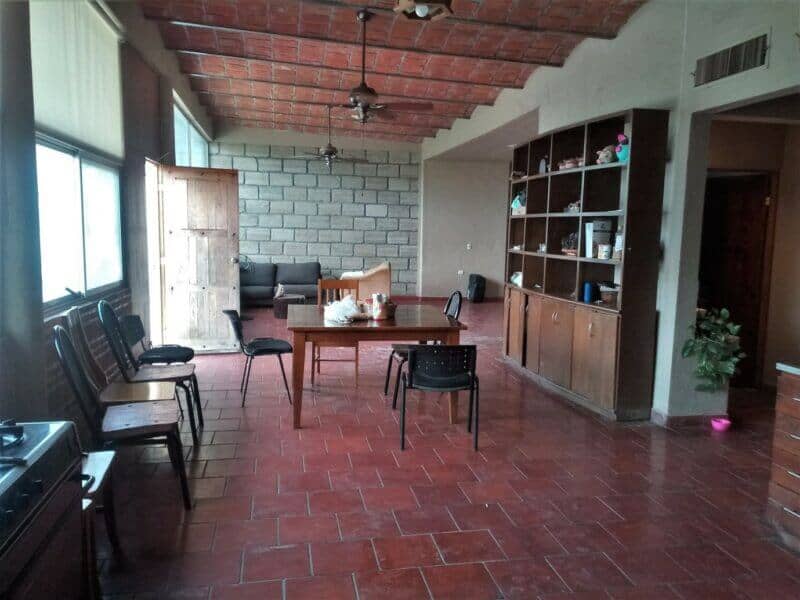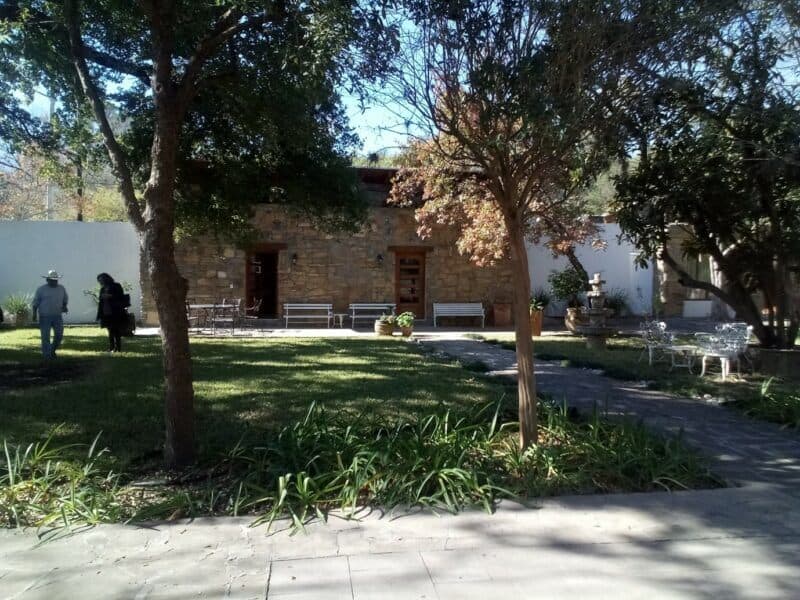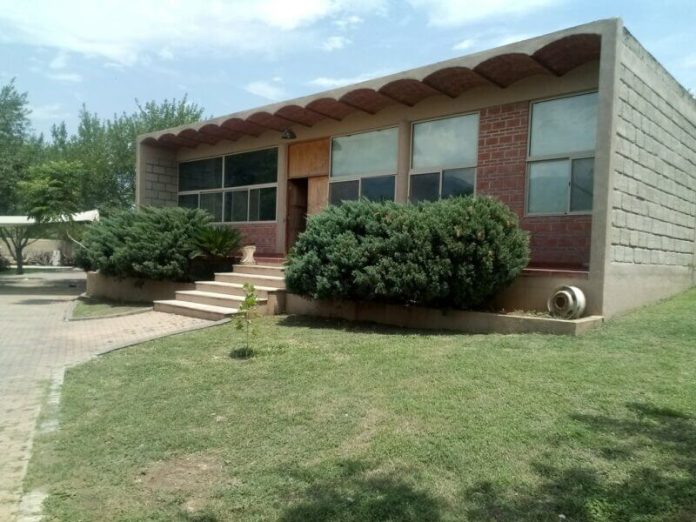Two years ago, we sold our house in south Monterrey. I had already retired and my wife was about to. We wanted a single-level house, hard to find in the city. But we could afford a quinta and still have the budget to improve it.
A quinta is, nominally, a fifth of a hectare, 2,000 square meters, but you’ll find that homes on anywhere from 1,000 to 3,500 square meters are called quintas.
Should you buy a casa or a quinta? Well, there are pluses and minuses:
On the minus side, it’s a lot more physical work looking after a quinta. It probably includes a pool, a well, a palapa, a barbacoa pit, a barbecue and lots of grass. Ours has two separate electrical circuits, a four-zone irrigation system and miles of plumbing. If you’re not reasonably fit and active, you’ll need to hire a gardener or handyman.
On the plus side, the extra activity keeps you fit. My gym is now the wheelbarrow, spade, lawnmower and line trimmer. I’ve lost weight and gained muscle.

Quintas are not often found in the city but in rural or semi-rural areas. A big plus is the clean air. Breathing in Monterrey was like smoking a pack of cigarettes every day — a week after moving, my lungs ached for days as they “got rid of the city.”
The downside is that out in a rural area, it takes longer to shop and do other city-related things.
Many quintas are rented out for parties, especially on weekends. One such example, about a kilometer away from my home, often fires off impressive fireworks displays in the evening, which is fun to watch. But the banda or ranchero music floating over on the breeze is less enjoyable. And when it gets to drunken karaoke? Double glazing is a must-have.
Don’t buy a quinta if you’re insect-phobic. In our first year, all the butterfly species visiting our garden delighted us, and in July, we sat on the back patio firefly-watching. All for free!
But we do get things called pinolillos (tromboculids), which bite horribly; the occasional scorpion; and many, many spiders. I’ve educated myself about them; they are so smart.
My favorite is the harmless Mexican bold jumping spider, with its eight eyes and green fangs. Tarantulas don’t worry us, but we are careful around the brown huntsman.
While we were in the process of looking for our home, we spent nearly six months trawling the area, visiting quinta after quinta while our buyer took forever to get his financing sorted out.
I began to categorize them:
The “failed project.” Begun but long abandoned.
The “ruined castle.” In such a rotted state that only a bulldozer could improve it.
The “hideout.” Miles from anywhere, with its Olympic swimming pool, pack of attack dogs and gun towers.
The “structural nightmare.” Built in the wrong place, facing the wrong direction, with a crumbling above-ground pool.

One from the last category left me with a peculiar form of OCD. We found a 1,600-meter quinta in a gated zone. Rather nice, in a posh colonia (neighborhood), but it was an obra blanca (a house still in the final stage of construction).
Another minus point was the sunken lounge. Far worse were the 16 structural support columns. All bulged, two feet above ground.
Finally, there was the house that got away: a stone cottage with walls about two feet thick. It had a rustic charm, though at 1,600 meters it was smaller than we wanted. Nor was the second bedroom a proper bedroom, but it was the best we’d found, so we offered a 10% deposit.
Two months later, our buyer finally got his loan. Strangely, the seller hadn’t yet cashed our deposit check. We said we wanted to close, but then the seller said he’d received a better offer.
I strongly doubted it, but we increased ours. Then the seller said he’d decided to sell to “a friend” and withdrew the sale. Since the seller now lived in the United States and the place had been on the market for years, I assumed he had viewed the sale in dollar terms and decided not to take the financial hit due to the changed currency exchange rate.
So we were house hunting again, angry at being strung along and desperate, a terrible combination.
Two weeks later, with our buyer nagging us every day, one of the realtors called us to say that a couple of new properties had come onto the market. We rushed to see them. The first was in the “failed project” category and quite nasty.
We drove to the second feeling gloomy, only to discover a possible option. It was the size we wanted. It had two bedrooms. It also came with the bonus of a substantial two-car garage and attached store. It belonged to a property company that had bought the whole 5,000-meter lot. Two of their workers lived in it with their families.
At first, I thought the house was made of block. These were not the regular size, nor made of cement. The house has a reinforced concrete post-and-beam skeleton with stucco-finished adobe block walls (non-load bearing). The front is an unusual cavity wall built of brick.
Inside, we found a typical country style with red terracotta floor tiles and, to our surprise, a boveda roof.
This house was a million pesos cheaper, had 400 meters more land and came with useful outbuildings. We’d have enough cash left over to completely redesign. One of the garages could be converted into a loft.
Our offer was accepted! We rushed to close, in the middle of the pandemic, with government services limited.
So what’s my advice? Visit as many potential places as possible. At each, try to place a rough value on the building(s), subtract that from the total, divide by the lot size. The result is your cost per square meter.
Price depends on proximity to major roads — but you don’t want to be too close (traffic noise). The worst value will be next to a golf club. Developers buy land very cheaply, flatten it, fence and gate it, build the roads, make a golf club and then sell little houses made cheaply for huge prices because of the club. Don’t waste your money.
Currently, we’re into our second year of quinta ownership: renovating the irrigation system, landscaping, and building a new pool.
Are we over budget? Of course we are!
Clive Warner is a retired British engineer and teacher who moved from the United Kingdom to Monterrey, Mexico, in 1990 with his Mexican wife, Sandra, after their computer business failed. After working in the cement and plastics industries, Clive became a teacher with the St. Patrick’s School in Monterrey. He has written four novels, a book about heart surgery, and a memoir. After selling their house in Monterrey a year ago, he and Sandra bought a “fixer-upper” quinta in Santiago and are still busy renovating it.
